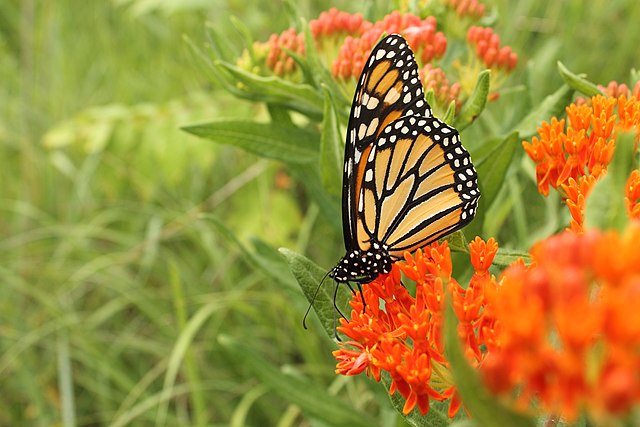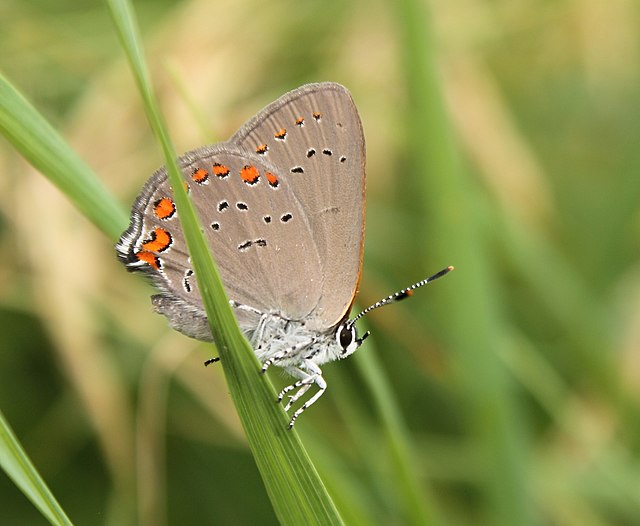Butterfly gardening is a way to create, improve, and maintain habitat for lepidopterans including butterflies, skippers, and moths. Butterflies have four distinct life stages—egg, larva, chrysalis, and adult. In order to support and sustain butterfly populations, an ideal butterfly garden contains habitat for each life stage.
A monarch butterfly (Danaus plexippus) feeding on butterfly weed (Asclepias tuberosa). Monarch populations have been declining in abundance due to loss of habitat in the United States and deforestation at overwintering grounds in Mexico.
A monarch waystation near the town of Berwyn Heights in Prince George's County, Maryland (June 2017)
A coral hairstreak (Satyrium titus) resting on a clump of grass. The larvae will feed upon species in the family Rosaceae, including cherry (Prunus serotina)
Group of Lysandra coridon puddling
The monarch butterfly or simply monarch is a milkweed butterfly in the family Nymphalidae. Other common names, depending on region, include milkweed, common tiger, wanderer, and black-veined brown. It is among the most familiar of North American butterflies and an iconic pollinator, although it is not an especially effective pollinator of milkweeds. Its wings feature an easily recognizable black, orange, and white pattern, with a wingspan of 8.9–10.2 cm (3.5–4.0 in). A Müllerian mimic, the viceroy butterfly, is similar in color and pattern, but is markedly smaller and has an extra black stripe across each hindwing.
Image: Monarch Butterfly Danaus plexippus Male 2664px
Image: Monarch In May
D. p. plexippus Piedra Herrada, Mexico
White morph of the monarch in Hawaii called the white monarch








